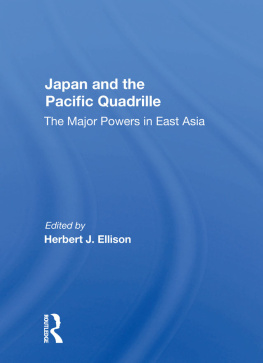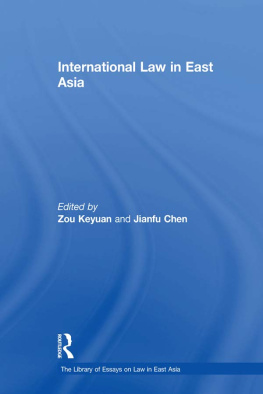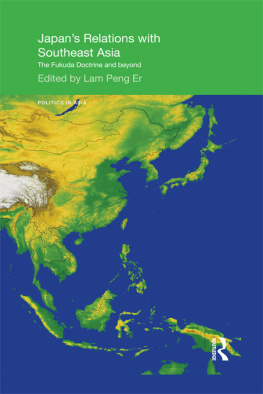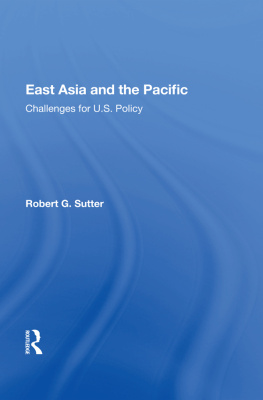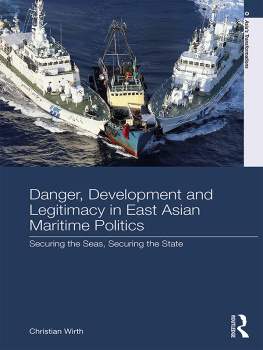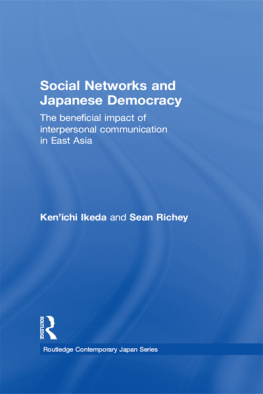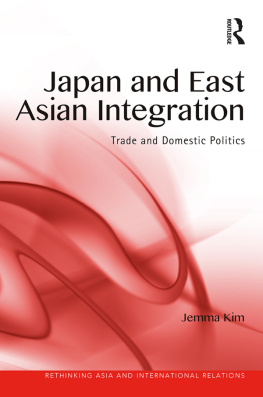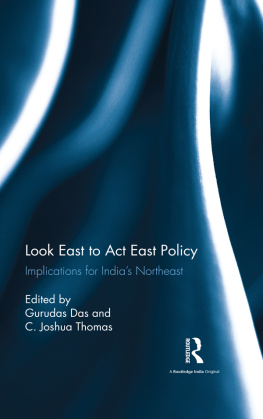Japan and the Pacific Quadrille
About the Book and Editor
The relationships between Japan, China, the United States, and the Soviet Unionamong the most important power relationships in the contemporary worldhave undergone pervasive and dramatic transformation during the past 15 years. China emerged from diplomatic isolation and the convulsions of the Cultural Revolution to define a new course in domestic policy and to take an active role in Asia and the world. The Soviet Union has become a global superpower, having built a formidable new regional military and naval presence that challenges the security and interests of the other powers, testing regional alliance structures. The United Statesinitially the dominant power in the regionis facing increasing economic competition from Japan and military competition from the Soviet Union.
Each of these changes has brought new opportunities for Japan, whose spectacular economic expansion was one of the major factors in the changing Asian power structure. None of the many complex questions about the modern Asian scene are more important than those concerning Japan's future policies: How will its new economic power be applied? how will it deal with the opportunity for a new relationship with China? and how will Soviet military expansion affect Japanese security policy, the vital issues of arms and Japan's security relationship with the United States in particular?
Herbert J. Ellison is professor of Russian history and chairman of the Russian and East European Studies program of the Henry M. Jackson School of International Studies, University of Washington. He was formerly secretary of the Kennan Institute for Advanced Russian Studies, Woodrow Wilson International Center for Scholars.
Published under the auspices of the Center for Contemporary Chinese and Soviet Studies, Henry M. Jackson School of International Studies, University of Washington, Seattle, and the Kennan Institute for Advanced Russian Studies, Woodrow Wilson International Center for Scholars, Washington, D.C.
Japan and the Pacific Quadrille
The Major Powers in East Asia
edited by Herbert J. Ellison
First published 1987 by Westview Press, Inc.
Published 2018 by Routledge
52 Vanderbilt Avenue, New York, NY 10017
2 Park Square, Milton Park, Abingdon, Oxon OX14 4RN
Routledge is an imprint of the Taylor & Francis Group, an informa business
Copyright 1987 Taylor & Francis
All rights reserved. No part of this book may be reprinted or reproduced or utilised in any form or by any electronic, mechanical, or other means, now known or hereafter invented, including photocopying and recording, or in any information storage or retrieval system, without permission in writing from the publishers.
Notice:
Product or corporate names may be trademarks or registered trademarks, and are used only for identification and explanation without intent to infringe.
Library of Congress Cataloging-in-Publication Data
Japan and the Pacific quadrille.
1. East AsiaForeign relations. 2. JapanForeign relations1945- . I. Ellison, Herbert J. II. Series.
DS518.J37 1987 327.52 86-18991
ISBN 13: 978-0-367-01315-8 (hbk)
Contents
, Herbert J. Ellison
, Robert A. Scalapino
, William E. Griffith
, Shinichi Ichimura and Mitsuo Ezaki
, Takashi lnoguchi
, Chalmers Johnson
, John J. Stephan
, Donald C. Hellmann
, Kenneth B. Pyle
, Herbert J. Ellison
All dashes in tables denote unavailability of data, unless otherwise indicated.
On June 11 and 12, 1983, a major conference on East Asian politics, entitled "Japan and the Pacific Quadrille: The New Phase," was held in Tokyo. The plan for the conference, from which this volume derives, was developed initially at the University of Washington's School of International Studiesnow the Henry M. Jackson School of International Studiesand its Center for Contemporary Chinese and Soviet Studies. The conference was part of a larger project dealing with the study of Chinese and Soviet foreign policy, which produced two earlier volumes: The Sino-Soviet Conflict: A Global Perspective (1981) and Soviet Policy toward Western Europe (1983), both published by the University of Washington Press. The Tokyo conference was organized and supported jointly by the University of Washington and by an informal collaboration with Professors Moto'o Kaji and Takashi Inoguchi of Tokyo University. Without their efficient and consistent supportboth organizational and financialthe conference would not have been possible.
I would also like to thank, in addition to the authors, the small group of invited conference participants who contributed so richly to the discussion of the papers and to the intellectual content of the present volume. The group from Japan included Professor Akihiko Tanaka from Tokyo University; Professor Tadashi Aruga from Hitotsubashi University; Professor Hideo Sato from Tsukuba University; Professor Sueo Sekiguchi from Osaka University; Professor Seiichiro Takagi from Saitama University; and Professor Nobuo Shimotomai, who came to the conference from the University of Birmingham. Additional participants included Professor Herbert Levine from the University of Pennsylvania and Professor Peter Katzenstein from Cornell University,
The funding for the conference and the publication of this volume was, as with many such scholarly enterprises these days, a complicated affair. For the costs of the conference itself, we are indebted to the University of Washington's School of International Studies and its Center for Contemporary Chinese and Soviet Studies; the Japan Foundation; the Osaka Fair Memorial Fund; the University of Washington Japan Endowment; the Kennan Institute for Advanced Russian Studies of the Woodrow Wilson International Center for Scholars, Washington, D.C.; and Professor Moto'o Kaji for his assistance with Japanese conference expenses.
The preparation of this volume was complicated by my becoming secretary of the Kennan Institute in the month following the conference. As I was wholly dependent upon the support services of the Kennan Institute during the preparation of this volume, it seemed more than appropriate to include it in the Institute's series of conference volumes. I am particularly indebted to Evan A. Raynes of the Kennan Institute for his assistance in editing the volume.
I would like, finally, to give special thanks to Professor Kenneth Pyle, director of the Henry M. Jackson School of International Studies, whose support in the preparation of the conference series was both inspiring and indispensable, and to Professor Kozo Yamamura of the Jackson School, without whose knowledge of the Japanese scholarly community and support in many forms the conference and this publication would not have been possible.
Herbert J. Ellison
Henry M. Jackson School of International Studies
University of Washington
Seattle, Washington
1.
Introduction: Japan and the Pacific Quadrille
Herbert J. Ellison
Since about 1970, there has been a diplomatic revolution in progress in Northeast Asiaa revolution in the sense that the structure of state relations prevailing in the region has been fundamentally transformed. The system that has been replaced, and in part is still being replaced, was the result of the power revolution in Asia wrought by World War II. The powerful Japanese Empire was crushed, and the power vacuum left by the Japanese defeat was filled chiefly by the United States and the Soviet Union. The main legacy of the war was a bipolar power structure and diplomatic system. Japan was defeated and disarmed, and China was weak and heavily dependent on Soviet economic and military support.

